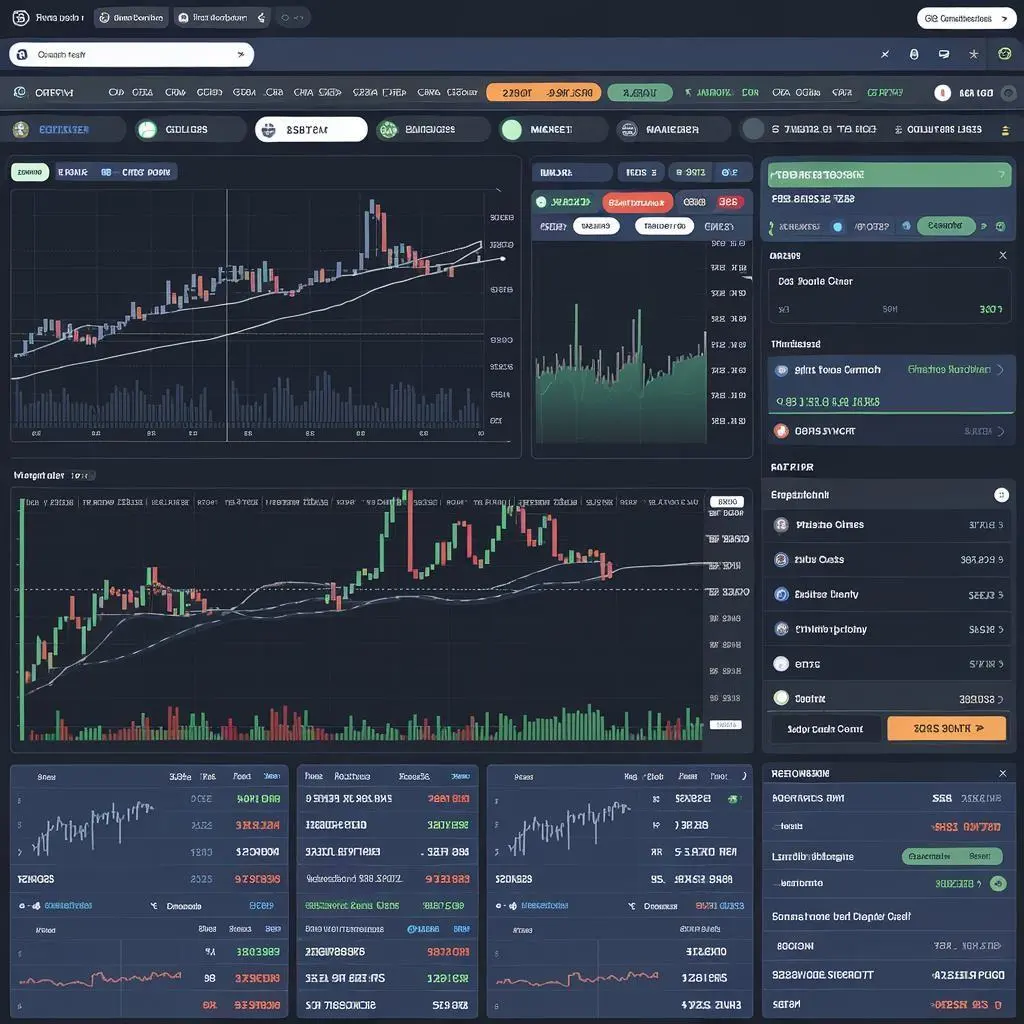Cryptocurrency Trading Pairs: Complete Guide 2025

Cryptocurrency trading pairs: a complete guide 2025
Cryptocurrency pairs trading is a key aspect of today's financial markets, where traders can use various strategies to maximize profits. Understanding how trading pairs work is the foundation of successful trading and even more: without understanding this basic trading tool, you should not start trading.
In this article, we will review the basic concepts, pair types, selection strategies, and advanced approaches to portfolio management.
Understanding trading pairs
Basic Concepts
A trading pair is a combination of two assets where one is used to measure the value of the other. For example, in a BTC/USD pair, bitcoin is valued in US dollars. Traders use such pairs to analyze the relative value of assets and make buy or sell decisions.
Base currency
The base currency is the first element of a trading pair that is measured in a second currency. For example, in an ETH/USDT pairing, ethereum is the base currency and stablecoin (USDT) acts as the quoted currency.
Steam mechanics
When trading a pair, price changes reflect the supply and demand for the underlying asset. If the demand for the underlying currency increases, the price of the pair increases, and vice versa. For example, if many traders start buying bitcoin, its price in the BTC/USD pair will increase. The same can be seen in other pairs: if there are many traders buying bitcoin in BTC/USD and its price increases, then in other pairs where BTC is the main asset its price will also increase. For example, in the BTC/USD pair the price is increasing, so in the BTC/USD pair the price will also increase.
Types of trading pairs
Cryptocurrency trading pairs
Pairs such as BTC/ETH or USDT/BUSD allow you to exchange one cryptocurrency for another. They are popular among traders who want to keep their funds in digital format without converting them into fiat money. There are many purely cryptocurrency pairs on the digital market, but the most popular ones are cryptocurrency bundled with stablecoin (USDT, USDC and others).
Crypto-fiat pairs
Pairs like BTC/USD or ETH/EUR are used to convert cryptocurrency into traditional currencies (dollars, rubles, euros and others). Often these pairs are used by market participants for conversion: when it is necessary to buy cryptocurrency for fiat and vice versa.
Stablecoin pairs
Stable coins, such as USDT, USDC or others, provide a stable exchange rate attached to fiat money units. In the case of these stable coins, they are pegged to the United States dollar and also have an equal value with it, in which case they are valued as 1 USDT = 1 USD. USDT/USDC evaporations are often used to manage liquidity and reduce volatility.

Pair selection strategy
Exchange accounting
The choice of exchange affects the amount of power available as well as the amount of commissions. Popular platforms such as Binance, Coinbase or Huobi offer an extensive selection of trading power. When selecting an exchange it is important to take into account its safety, security and user-friendly interface.
In case you are a competent trader in cryptocurrency trading and you are interested in the most unique or newest trading vapors, which have significant volatility, and together with it and also a high allowable benefit or loss, you can focus your attention in decentralized exchanges (DEX).
On these platforms, anyone can list a new cryptocurrency, unlike centralized exchanges or CEX (Binance, Kraken and others), where listing (adding a new trading pair) occurs only after the approval of the platform. Having bought a promising asset on the DEX exchange, you can wait until it is listed on the CEX and sell it for a good profit.
Volume analysis
High trading volume indicates high liquidity and reduced risk of slippage. Traders should prefer pairs with stable volume in order to enter and exit positions easily.
The essence here is as follows: the more an asset is traded, the easier it is to sell or buy it, and vice versa. For example, if the asset is low-liquid, a trader who has set a pending (automatic) order to buy at the price he is interested in may never wait for this order to be executed. But if the asset was liquid, such problems would not occur, because it is constantly sold and bought at different prices.
Liquid pairs make it easy to enter and exit positions without significantly affecting the price. This is especially important for large traders who deal in large volumes.
Volatility factors
Volatile pairs can bring more profits, but they are also associated with higher risk. You should assess your risk tolerance level before selecting such pairs. For example, SOL/USDT may be more volatile than BTC/USDT.
If we talk about new cryptocurrencies that have only recently appeared on the market and their capitalization is small, then here the price can easily change by tens of percent in a minute. Therefore, you should consider the risks before entering a highly volatile pair.
Approach to trading

Pairs trading strategy
Traders can use different strategies such as scalping, trend trading or arbitrage to maximize profits.
-
Trend trading is all about looking for trends in bitcoin price movement. Traders use technical indicators such as moving averages to establish potential support, resistance levels and identify entry and exit points;
-
Scalping is a short-term aspect of trading that involves creating and closing several positions during the day. This type of trading is often aimed at rapidly changing, highly liquid markets such as cryptocurrencies;
-
A statistical arbitrage strategy uses algorithms to analyze historical data and identify temporary deviations between two or more correlated assets. It is based on the mean reversion theory, which assumes that assets always return to their historical price levels. It is for the sake of this strategy that our cryptocurrency arbitrage scanners and screeners are designed.
Market correlation
Analyzing the correlation between different assets helps to predict price movements. For example, a positive correlation between bitcoin and gold can be used to create hedging strategies.
Also, the maximum correlation between the cryptocurrency market and stocks was reached in September 2024. This shows that if one market grows, so does the other, and vice versa.
Risk management
Effective risk management includes the use of stop-losses, portfolio diversification and control over the size of positions. For example, it is recommended not to risk more than 1-2% of capital in one transaction.
Position size
The correct choice of position size is the main aspect of successful trading, as someone will reduce possible losses and also significantly increase the probability of accomplishing trading goals. For this purpose, traders often use various capital management techniques, for example, they restrain the threat to one transaction 1-2% of the single depo, which gives the opportunity to protect the portfolio, including in the case of a series of unsuccessful trades.
In order to optimize the risk/return ratio, precise modifications are also used, such as Sharpe ratio or formulation of Sheepdog, in which place the main conditions are the exact definition of the stop-loss level, calculation of current market volatility and individual preferences in the relationship between risk. It is important to remember that the volume of the view must meet as well as the total capital of the trader, as well as the characteristics of a particular trader's vapor, including its liquidity and historical price volatility.
Portfolio diversification
Risk reduction
Diversification helps to distribute risks between different assets, reducing dependence on one asset or pair. You should invest in different assets: cryptocurrencies, stocks, bonds, metals and others. Let's say an investor invested all his capital in cryptocurrencies, and the market started a drawdown. But if he invested in cryptocurrencies, bonds and metals, the drawdown would be only
⅓ of the portfolio.
If an investor is only interested in cryptocurrencies, it's worth at least dividing by sector: BTC and ETH, DeFi, meme coins, PoliFi and others.
Balancing strategies
Traders can use automated systems or manual methods to maintain an optimal balance in the portfolio. For example, the 60/40 rule suggests that 60% of capital is invested in less volatile assets and 40% in riskier assets.
Growth opportunities
A properly constructed portfolio opens up opportunities for long-term capital growth. For example, investing in new projects that are not meme-coins can yield high dividends.
Market exposition
Exposure management helps traders control the level of participation in different market segments. For example, it is possible to split capital between crypto-to-crypto, crypto-to-fiat, and stablecoin pairs.
Advanced trading
Statistical arbitrage
Using algorithms to analyze historical data and identify temporal deviations between correlated assets. For example, if the price of the same cryptocurrency differs on different exchanges, you can use this difference to make a profit.
Correlation trading
This strategy is based on the correlations between different assets and allows you to create hedging positions. For example, if two assets are historically linked, opposite positions can be opened to minimize risks.
It is difficult to find such a pattern within one market, so it is better to look among different markets. For example, the market of cryptocurrencies and government bonds: when cash (decision of the central bank of a country) enters the market, cryptocurrencies may become more expensive and bonds may become cheaper.
Market neutrality
Traders seek a neutral position to minimize the impact of market fluctuations. For example, it is possible to buy and sell related assets at the same time to capitalize on their difference.
Implementation of strategies
Advanced traders often use automated systems in order to implement complex strategies. For example, bots have all chances to perform thousands of deals in one second, applying the information of technological consideration and also analyzing the situation in the market.
Conclusion
Trading cryptocurrency pairs will require a deep understanding of the market, analytical skills as well as effective risk management. The right choice of strength as well as strategies can significantly increase the chances of success.
In any case, you should not start trading or investing or arbitrage cryptocurrencies if you have not studied the basic concepts of the markets, among which trading pairs will be among the first. We have just written a whole training course for both beginners and traders with experience in the market.
Frequently Asked Questions
How to choose the best trading pairs for beginners?
Beginners are advised to start with highly liquid pairs such as BTC/USDT or ETH/USDT and use simple strategies such as trend trading.
What factors affect the liquidity of trading pairs?
The main factors are trading volume, the popularity of the pair, regulatory requirements and the technical infrastructure of the exchange.
Why is trading volume important when choosing a pair?
High trading volume ensures price stability and reduces the risk of slippage.
What are the risks of exotic trading pairs?
Exotic pairs are usually less liquid and more volatile, which increases the risks of drawdown and the difficulty of exciting positions.
How to effectively manage multiple trading pairs?
Use market analysis software, automate processes and employ diversification strategies.
Want to learn more about crypto arbitrage?
Get a subscription and access the best tool on the market for arbitrage on Spot, Futures, CEX, and DEX exchanges.




